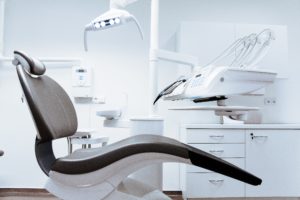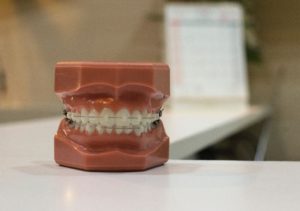To refresh your memory, PRP is blood that has been infused with 5-10 times more platelets (the healing elements in your blood) than normal. It can sometimes even be used during surgical procedures to get a jump start on the recovery process. PRP therapy is most often used to treat connective tissue injuries and promote faster healing after a procedure. You can learn about PRP in more detail here.
But how did PRP get so popular? How did doctors discover that PRP could be used to enhance healing? That it helped tissue and orthopedic issues? Read on for a comprehensive history of PRP – the substance that has radically changed the medical world for the better.
The Emergence of PRP

There’s more than one reason why PRP is a hot topic.
One reason is due to the “growth factors” present in the extracted substance. These factors play a huge part in the healing process.
The realization that these growth factors could aid with post-operative healing was discovered as early as the 1970s. However, costly inefficient factors kept PRP therapy from being conducted. The equipment was bulky and costly, and the procedure itself called for a large amount of the patient’s blood (450 cc)- that’s almost 2 cups of your blood! Due to factors such as these, PRP was mostly limited for use during the more involved larger-scale surgeries.
Starting in the early 1990s, however, PRP started to hit its stride. More studies began to be conducted, so scientists and doctors alike were better able to understand the qualities that PRP brought to the table. Eventually, PRP gained a huge boost in popularity in the early 2000s when a famous sports star was able to play in the Super Bowl (more on that below). Several studies came out in the dental and cosmetic fields particularly that helped jumpstart the PRP revolution in the early-mid 2000s. The results showed that, statistically and across-the-board, PRP dramatically improved post-op healing (among other benefits).
PRP in Orthopedics
 Fast forward to the early 2000s. By this time, PRP had expanded into more worlds than the medical field, namely orthopedics.
Fast forward to the early 2000s. By this time, PRP had expanded into more worlds than the medical field, namely orthopedics.
Orthopedic surgeons have found that PRP helps immensely in healing bone grafts and fractures. In 2006, a study done at Stanford University shows PRP’s effectiveness in treating chronic tendon issues.
This and other research has validated PRP’s effectiveness in treating ligament and connective tissue repair injuries- such as healing ACL damage or plantar fasciitis, for example. These and other successes led to PRP being used in sports medicine for the first time in 2008.
PRP in Sports Medicine

Hines Ward, a former wide receiver for the Pittsburgh Steelers, was one of the first pro athletes to be treated with PRP.
During an AFC Championship game, Ward sprained his medial collateral ligament in his right knee. Medical professionals on the Steelers’ training staff thought that Ward would be out for 4-6 weeks. This time frame was unacceptable as the Super Bowl was taking place within that period; with Ward’s blessing, the medical staff opted to try what was, at the time, alternative treatment- PRP. The rest is history, as they say: A short time later, Ward went on to help the Steelers win the Super Bowl. The pro athlete accredits PRP to being largely the reason that he was able to play. Ward’s story gained national attention and PRP therapy started to be taken more seriously as a treatment.
Since then, other famous athletes like Rafael Nadal, Alex Rodriguez, and Stephen Curry have all received PRP treatments. Following Hines Ward’s example, many accredit PRP as being a career saver for several star athletes, Nadal and Curry included among them.
PRP in the Dental Field
 A study was conducted in 2014 by scientists interested in researching bone metabolism. Their goal was to study changes in patients’ bone and neural structure after receiving oral implants in addition to PRP. They tested 30 individuals who were assigned to two groups- one group had been treated with PRP in conjunction with the procedure and the other not. The study concluded that “PRP application may favor bone formation” around dental implants. A more recent study (2017) concludes that “PRP therapy is a promising treatment for musculoskeletal injuries“. These revelations (among others) only strengthen the claim that PRP can heal many different types of body tissues (while still aiding in the healing process).
A study was conducted in 2014 by scientists interested in researching bone metabolism. Their goal was to study changes in patients’ bone and neural structure after receiving oral implants in addition to PRP. They tested 30 individuals who were assigned to two groups- one group had been treated with PRP in conjunction with the procedure and the other not. The study concluded that “PRP application may favor bone formation” around dental implants. A more recent study (2017) concludes that “PRP therapy is a promising treatment for musculoskeletal injuries“. These revelations (among others) only strengthen the claim that PRP can heal many different types of body tissues (while still aiding in the healing process).
The Evolution of PRP Technology

The bulky expensive machinery available in the 1970s contributed greatly to PRP’s unpopularity until the early 2000s.
Since then, technological advancements have allowed for a more approachable PRP treatment. Now, there are several non-invasive ways to conduct the procedure. As an added bonus, doctors no longer need to take 450 cc’s of your blood- only a small sample of 20-120 cc’s is needed.
Machines are smaller- some are even portable- and more affordable for doctors, scientists, and med spas alike. Many companies are known to also supply an extra machine with purchase if certain quotas are made.
Harvest Technologies was one of the first companies to produce FDA-approved PRP devices. They are still frontrunners in the PRP device market today. In 2008, a group of scientists conducted a study on Harvest Technologies’ PReP machine; they concluded that it is one of the best machines available on the market.
The Attraction to PRP
Hopefully this history of PRP has given you some idea about how and why PRP got to be such a popular option for doctors and patients alike. For starters it is a non-invasive alternative to surgery. This reason alone is why several opt to try PRP- even if it doesn’t work, it is still good to try. It is an outpatient procedure with almost zero recovery time! If it does work, then lucky you! You’ve just saved thousands of dollars on needless surgery. We say that’s money for a shopping spree- or to put aside for a rainy day!
As exampled above, PRP has proven to be useful across a multitude of fields. Honestly, we don’t think PRP’s usefulness has even begun to reach its peak. More and more studies continue to be conducted- we’re sure that we’ll hear about several more applications for PRP in the years to come.
Interested in PRP treatments? Schedule a consultation at Veritas Backstage today!

